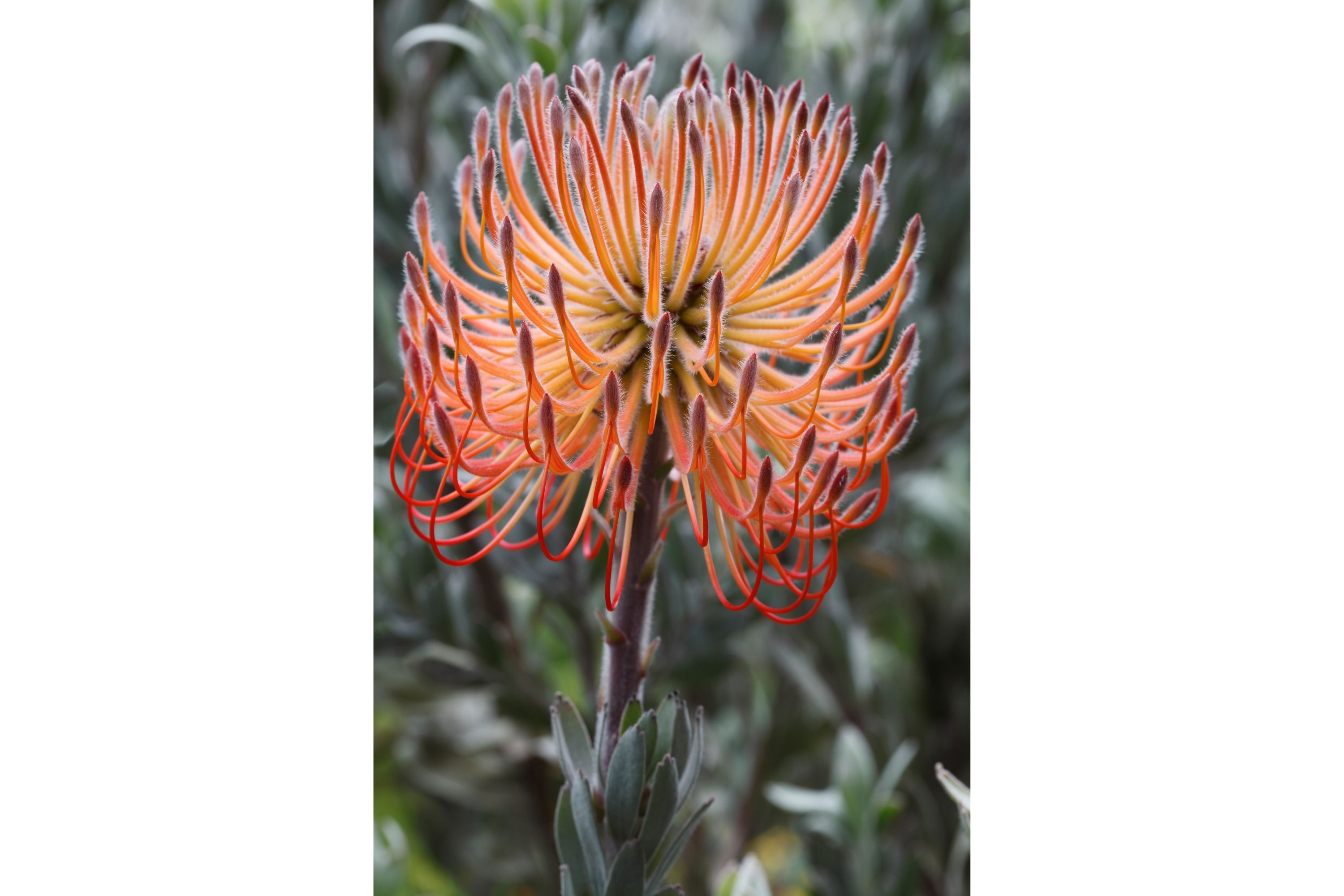Yellow-trailing pincushion
(Leucospermum prostratum)

Description
Leucospermum prostratum is a trailing shrub of up to 4 m (13 ft) in diameter from the Proteaceae. It has alternately set, about 3 cm (1.2 in) long, lance-shaped, olive-colored, upright leaves, and produces sweetly scented, compact, hemispherical flower heads, with long styles sticking out far from the perianth tube, which jointly give the flower head the appearance of a pincushion. The fragrant flowers found between July and December are initially yellow but turn orange when older. It is an endemic species restricted to the south coast of the Western Cape province of South Africa. Its common name is yellow-trailing pincushion. The yellow-trailing pincushion was first described by Carl Peter Thunberg in 1794 as Protea prostrata. In 1809, Joseph Knight published a book titled On the cultivation of the plants belonging to the natural order of Proteeae, that contained an extensive revision of the Proteaceae attributed to Richard Anthony Salisbury. He described Leucadendron glomiferum, based on another specimen than Thunberg's description. In 1856 Carl Meissner creating the new combination Leucadendron prostratum. He also recognised the name Leucospermum diffusum that Robert Brown had published in 1810 without a description, and provided the description. Otto Stapf assigned the plant in 1912 to the genus Leucospremum and made the new combination L. prostratum. L. prostratum has been assigned to the section Diastelloidea. No hybrids have been found between L. pedunculatum and L. prostratum even when growing next to each other (in Kleyn Hagel Kraal near Pearly Beach).
Taxonomic tree:







